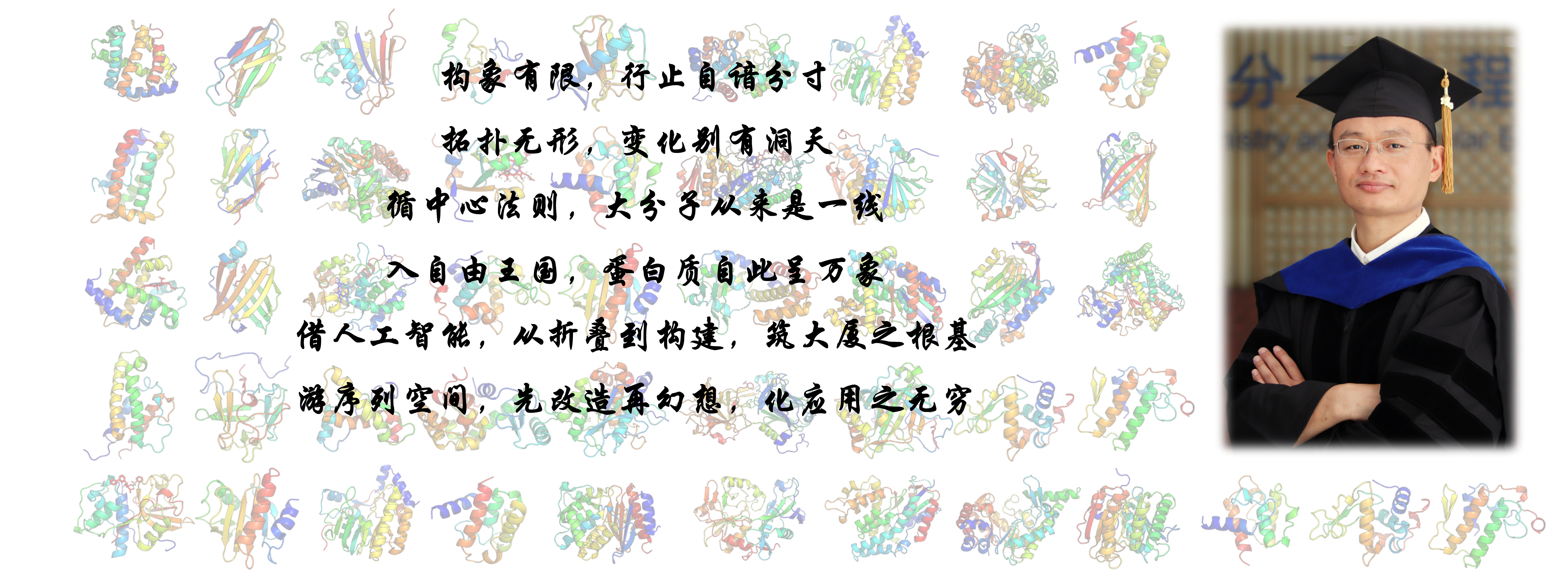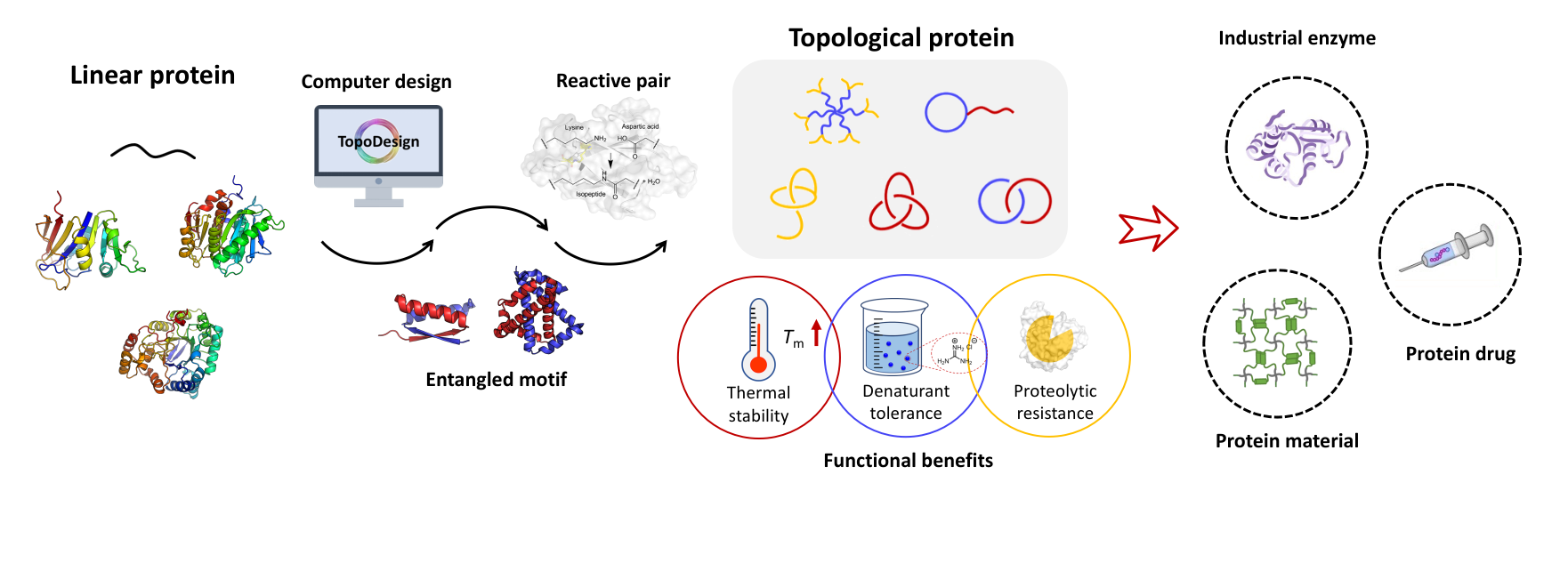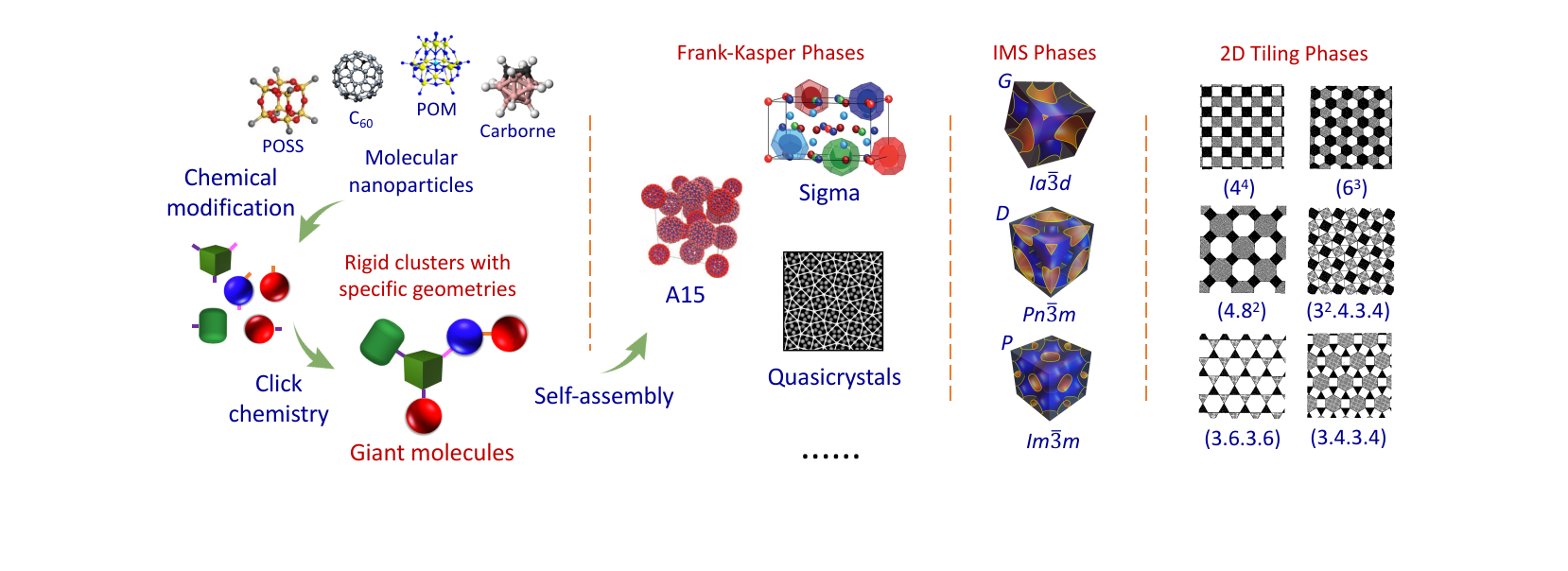箴言
在科学上没有平坦的大道,只有那些不畏艰险沿着陡峭山路攀登的人,才有希望达到光辉的顶点。
----马克思
-----------------------------------------------
合作研究
请有兴趣的研究组联系我们。欢迎任何形式的合作,尤其是在自组装、水凝胶以及生物医药等方向的合作。
------------------------------------------
研究内容
Ever since the Macromolecular Hypothesis by Staudinger, the field of Polymer Science has undergone a rapid growth and witnessed the establishment of the long chain polymer paradigm over the past century. Nowadays, commodity polymers have permeated almost everywhere in our daily life. Nevertheless, our control over macromolecular structure and function is still in its infancy. By contrast, Nature has demonstrated in numerous examples how polymers can be used in a delicate and sophisticated way to achieve an extremely complex function. We polymer scientists are now facing daunting challenges to create new macromolecules that parallel, or excel natural biological polymers in sequence control, structural precision, and especially, the functional delicacy.
To address these challenges requires thinking out of the polymer box and developing unconventional macromolecules that combine the advantages of both synthetic and biological polymers using the inspirations from Nature. To realize this vision, novel approaches are required to rationally and modularly designing molecules, rapidly generating macromolecules and precisely controlling their self-assembly (folding), and fearlessly exploring new and exotic functions. These approaches will interface in powerful ways with protein engineering, supramolecular chemistry, molecular biology, and nanotechonology to enable a synergy between chemistry, physics, and biology.
Specifically, the research efforts in this direction fall into the following categories:
I. Discover Building Blocks. Molecular segments of unique structure are the foundation of function. New composition, topology, architecture can always bring in unexpected properties and function. For many times, building blocks were discovered in purely aesthetical sense (such as trypticene, truxene, dendrimers, fullerenes, POSS, carbon nanotube, and graphene) and later found many applications. Novel structures impart novel properties. Thus, discovery of new building blocks is the engine for new materials.
II. Expand Chemical Toolbox. Molecules are constructed by covalent bonds. Supermolecules are based on noncovalent bonds. For chemists, it is essential to achieve more robust and versatile control over the chemistry. We need ideal reactions that are highly efficient and functional group-tolerant; we need to control reactions to happen and to stop; we want reactions to be reversible to the exact extent that is desired; we want encode reactions in a way that can read out in different ways. Through the development of a complete chemical toolbox, we could engineer the property of materials in diverse ways.
III. Design Precise Macromolecules. The combination of new building blocks and new chemistry allows preparation of new precise macromolecules. New macromolecular architectures are constantly emerging beyond the classical long-chain polymers, including ladder-type polymers, 2D and 3D polymers with regular structures, and shape-persistent giant molecules. The holy grail of polymer chemistry is to achieve precisely-controlled heterogeneity in a macromolecule toward a specific function. It means not only well-defined sequence, length, stereochemistry, and topology, but also hierarchical structures that are implicated from the primary structure.
IV. Control Self-Assembly (Folding). In proteins, precisely arranging atoms in 3D is achieved by folding. Such a process is not yet found in synthetic polymers. Unlike small molecules, macromolecules have much slower self-assembly kinetics and are usually trapped at various metastable states. Facing milieu possible outcomes, they often need a hand to choose a correctly assembled structure. This brings in the concept of “catassembly” which uses various “catassemblers” to promote the assembly toward a specific structure and a desired function. The future assembly would be steered toward those functionally useful states that are far from thermodynamic equilibrium or have dynamic features to adapt and function through space and time.
V. Enable Unique Function. Human history is classified by the materials in use: “Stone Age”, “Bronze Age”, and “Silicon Age”. These materials have distinct physical properties to guarantee applications in various subjects. Future materials are characterized by the hybrid feature that fuses the pros of different materials. On the other hand, if we look at biological systems, we find that those materials are “living”. It is a complex composite of various small molecules and macromolecules that are in dynamic equilibrium and constantly renewing itself to resist fatigue and to heal. Future materials should also possess features like these. It does not say that it has to be biological, but cool ideas will always find its unique place which we refer to as soft matter X.
The implementation of this vision requires multidisciplinary collaborative efforts. In our lab, we strive to walk out of the traditional polymers and seek unconventional macromolecule architectures to expand our horizon. Specific projects currently under intense investigation in our group include:
1. Regio-isomeric giant molecules: Exploring another dimension for controlling macromolecular self-assembly;
2. Genetically encoded “click” chemistry: From chemical toolbox to bioactive materials;
3. Exploring topologically complex proteins and its implication in materials science;
4. Controlled drug delivery system based on all-protein-based, bioactive hydrogels;
5. Macromolecular catassembly system: From molecular chaperone to “assembly-reaction” synergy.
References
(1) Zhang, W.-B.;* Cheng, S. Z. D.* Toward Rational and Modular Molecular Design in Soft Matter Engineering. Chin. J. Polym. Sci. 2015, 33, 797-814.
(2) Huang, M.; Hsu, C.-H.; Wang, J.; Mei, S.; Dong, X.; Li, Y.; Li, M.; Liu, H.; Zhang, W.; Aida, T.; Zhang, W.-B.;* Yue, K.;* Cheng, S. Z. D.* Selective-Assemblies of Giant Tetrahedra via Precisely Controlled Positional Interactions. Science, 2015, 348, 424-428.
(3) Sun, F.; † Zhang, W.-B.; † Mahdavi, A.; Arnold, F. H.;* Tirrell, D. A.* Synthesis of Bioactive Protein Hydrogels by Genetically-encoded SpyTag-SpyCatcher Chemistry. Proc. Natl. Acad. Sci. USA 2014, 111, 11269-11274.
(4) Zhang, W.-B.; Yu, X.; Wang, C.-L.; Sun, H.-J.; Hsieh, I-F.; Li, Y.; Dong, X.-H.; Yue, K.; Van Horn, R. M.; Cheng, S. Z. D.* Molecular Nanoparticles Are Unique Elements for Macromolecular Science: From “Nanoatoms” to Giant Molecules. Macromolecules 2014, 47, 1221-1239.
(5) Zhang, W.-B.;† Sun, F.;† Tirrell, D. A.;* Arnold, F. H.* Controlling Macromolecular Topology with Genetically Encoded SpyTag-SpyCatcher Chemistry. J. Am. Chem. Soc., 2013, 135, 13988-97.
(6) Yu, X.; Yue, K.; Hsieh, I.-F.; Li, Y.; Dong, X.-H.; Liu, C.; Xin, Y.; Wang, H.-F.; Shi, A.-C.; Newkome, G. R.; Ho, R.-M.; Chen, E.-Q.;* Zhang, W.-B.;* Cheng, S. Z. D.* Giant Surfactants Provide a Versatile Platform for Sub-10nm Nanostructure Engineering. Proc. Natl. Acad. Sci. USA, 2013, 110, 10078-83.






